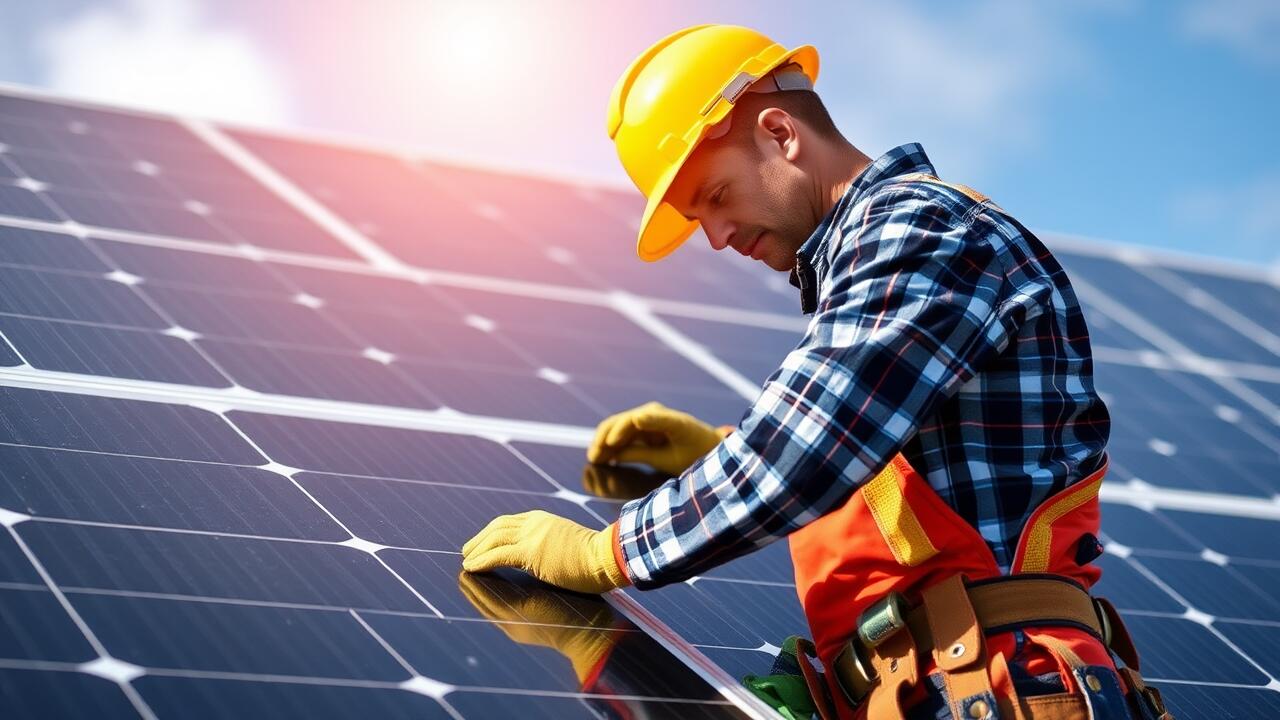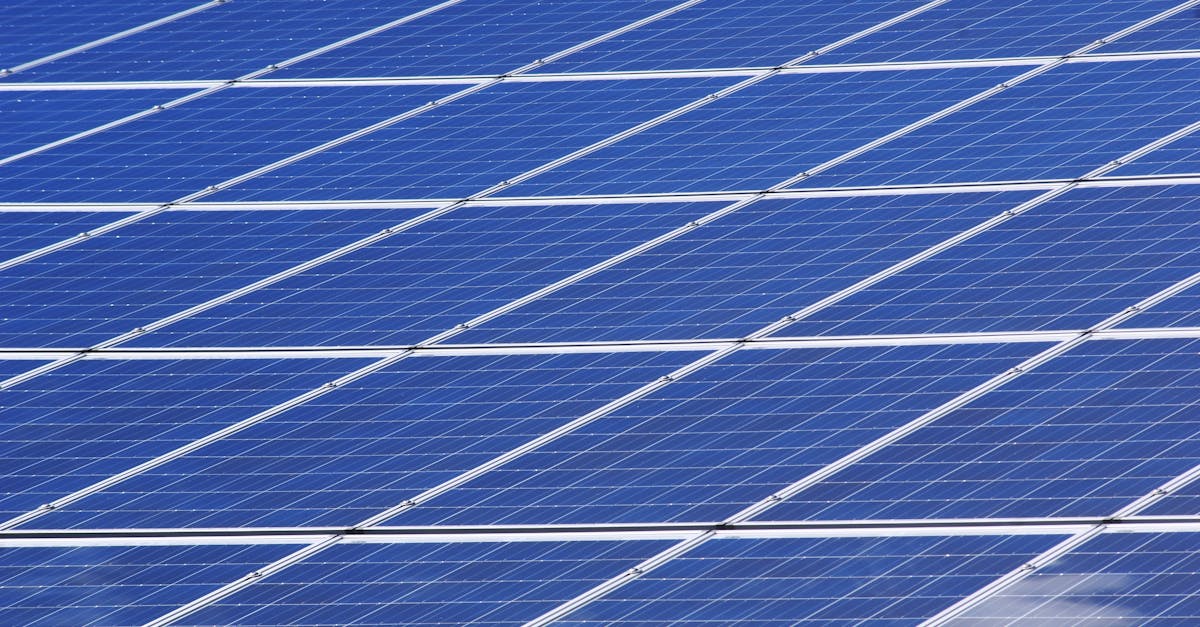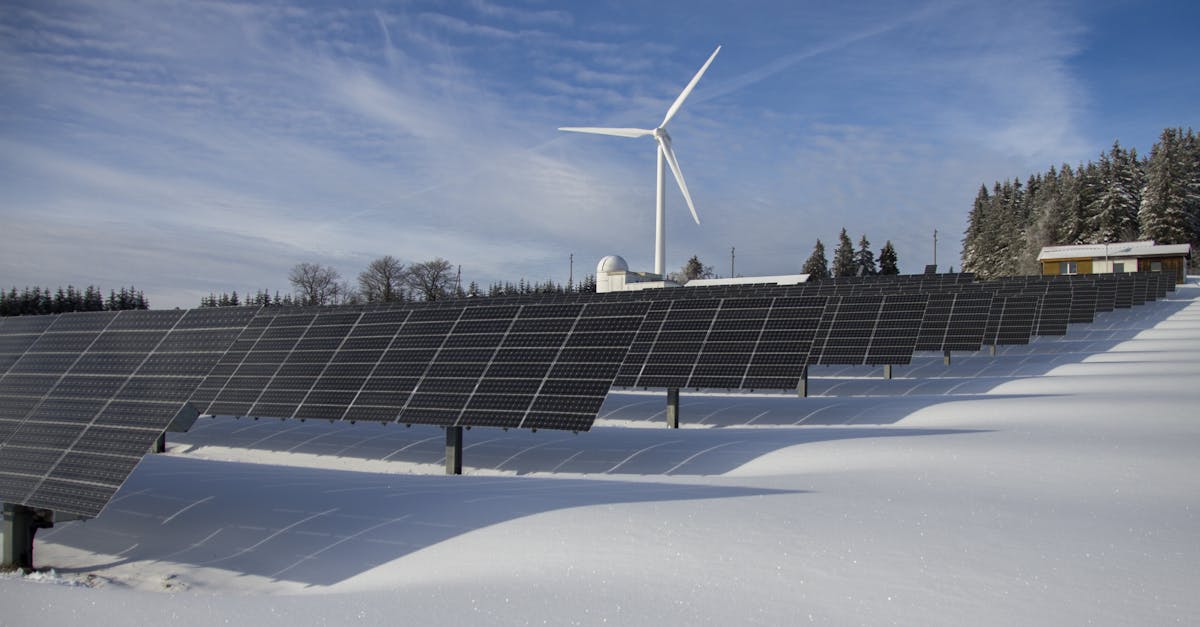
Long-Term Savings from Solar Energy
Investing in solar energy systems often leads to significant long-term savings on electricity bills. Homeowners can experience a reduction in monthly energy costs, allowing them to allocate funds to other essential areas of their lives. By harnessing the power of the sun, households can generate their own electricity, reducing reliance on energy suppliers and protecting themselves from fluctuating energy prices. With the increasing cost of traditional energy sources, the financial advantages of solar installations are more compelling than ever.
In Jacksdale, Nottinghamshire, solar panel installation not only provides immediate savings but contributes to a sustainable energy future. As technology improves and efficiency rates rise, solar systems are becoming more affordable and accessible to homeowners. Communities that adopt solar power witness a positive impact on property values and enjoy potential government incentives, further enhancing the long-term financial benefits of investing in renewable energy.
Estimating Return on Investment
Estimating the return on investment (ROI) for solar panel installation involves evaluating several key factors. Homeowners must consider the initial costs of installation, which can vary based on the type and efficiency of the panels chosen. In regions like Jacksdale, Nottinghamshire, government incentives and feed-in tariffs may also influence the overall financial picture, providing additional savings over time. By calculating potential energy savings against the initial outlay, homeowners can gain a clearer understanding of the economic benefits that solar energy can bring.
Moreover, the longevity of solar panels plays a crucial role in determining ROI. Most panels come with warranties of 20 to 25 years, and many continue to operate efficiently beyond that time frame. Calculating the average energy bill reduction alongside these warranty periods can paint a more comprehensive picture of the investment’s value. By assessing the long-term savings versus the upfront costs, homeowners can make informed decisions regarding solar energy adoption in areas like Jacksdale, Nottinghamshire.
Maintenance Costs of Solar Panels
Regular maintenance is essential to ensure the optimal performance of solar panels. While solar systems are generally low-maintenance, periodic cleaning and inspections are necessary to maximise efficiency. Dust, dirt, and debris can accumulate on the panels, affecting their ability to capture sunlight. Homeowners may need to invest in professional cleaning services, especially if the panels are installed in areas with heavy rainfall or pollen. In regions like Jacksdale, Nottinghamshire, where weather conditions can vary, it is particularly important to maintain the panels to secure long-term energy production.
In addition to cleaning, annual inspections by a qualified technician can help identify any potential issues before they become significant problems. These inspections typically include testing the inverter, checking for any shading issues, and assessing the overall condition of the system. While these maintenance costs are relatively minor compared to the initial installation expenses, homeowners should still budget for them to ensure their solar power system remains in excellent working order. By staying proactive about maintenance, residents in Jacksdale can enjoy the benefits of solar energy without unexpected disruptions.
Ongoing Expenses to Keep in Mind
When considering the ongoing expenses associated with solar panels, homeowners should account for insurance and potential repair costs. Many policies now cover solar installations, but it's prudent to check if additional premiums apply. Regular checks are also essential, ensuring that the system operates efficiently and identifying any issues before they become costly repairs. Solar Panel Installation Jacksdale, Nottinghamshire, can provide valuable insights into the specific maintenance needs relevant to the local climate and environment.
Another factor to consider is the inverter replacement, which typically occurs every five to ten years. This component converts the direct current generated by the panels into alternating current for home use. The cost of replacing an inverter can be significant and should be factored into long-term budgeting plans. While solar panels themselves are designed to last for decades, understanding these associated costs helps homeowners prepare for a sustainable and financially sound investment.
Comparison of Solar Panel Types
When considering solar panel types, two primary options stand out: monocrystalline and polycrystalline panels. Monocrystalline panels are made from a single crystal structure, which often allows them to achieve higher efficiency rates and take up less space on rooftops. Their sleek appearance and longer lifespan make them an appealing choice for many homeowners. However, the costs of these panels typically run higher than their polycrystalline counterparts, making budget considerations essential for prospective buyers.
On the other hand, polycrystalline panels consist of multiple crystal structures, which generally results in lower efficiency but a more budget-friendly price point. This type of panel tends to occupy more space, which might be a limiting factor for smaller roofs. Nonetheless, they can still provide substantial energy savings in the long run. Solar Panel Installation Jacksdale, Nottinghamshire, offers a variety of options to cater to different needs, allowing homeowners to weigh the trade-offs of each type before making a decision.
Cost Differences Between Monocrystalline and Polycrystalline
Monocrystalline solar panels are often considered the premium choice due to their higher efficiency and sleek aesthetic. They are made from single-crystal silicon, allowing for a more efficient energy conversion even in low-light conditions. This greater efficiency usually results in a higher price point. Homeowners in areas like Jacksdale, Nottinghamshire, may find that the initial investment is worthwhile due to potential long-term savings on energy bills.
On the other hand, polycrystalline solar panels offer a more budget-friendly option. These are made from multiple silicon crystals, which can lead to slightly lower efficiency but also reduced manufacturing costs. As a result, polycrystalline panels are typically less expensive, making them an attractive option for homeowners who want to minimise upfront expenses. However, it’s essential to weigh the cost against the efficiency and long-term energy production expected in Jacksdale, Nottinghamshire.
FAQS
What is the average cost of installing solar panels on a house in the UK?
The average cost of installing solar panels on a house in the UK typically ranges from £4,000 to £8,000, depending on the size of the system and the type of panels used.
Are there any government incentives for installing solar panels in the UK?
Yes, the UK government offers various incentives, such as the Smart Export Guarantee (SEG), which allows homeowners to earn money by exporting surplus energy back to the grid.
How long does it take for solar panels to pay for themselves?
On average, solar panels in the UK can take between 5 to 10 years to pay for themselves through energy savings and government incentives, depending on the system's size and installation costs.
Do solar panels require maintenance, and what are the costs involved?
Solar panels require minimal maintenance, but regular cleaning and inspections are recommended. Maintenance costs typically range from £100 to £300 per year, depending on the services needed.
What are the differences between monocrystalline and polycrystalline solar panels in terms of cost?
Monocrystalline solar panels generally cost more than polycrystalline panels due to their higher efficiency and longer lifespan. However, the price difference can vary based on market conditions and specific brands.


